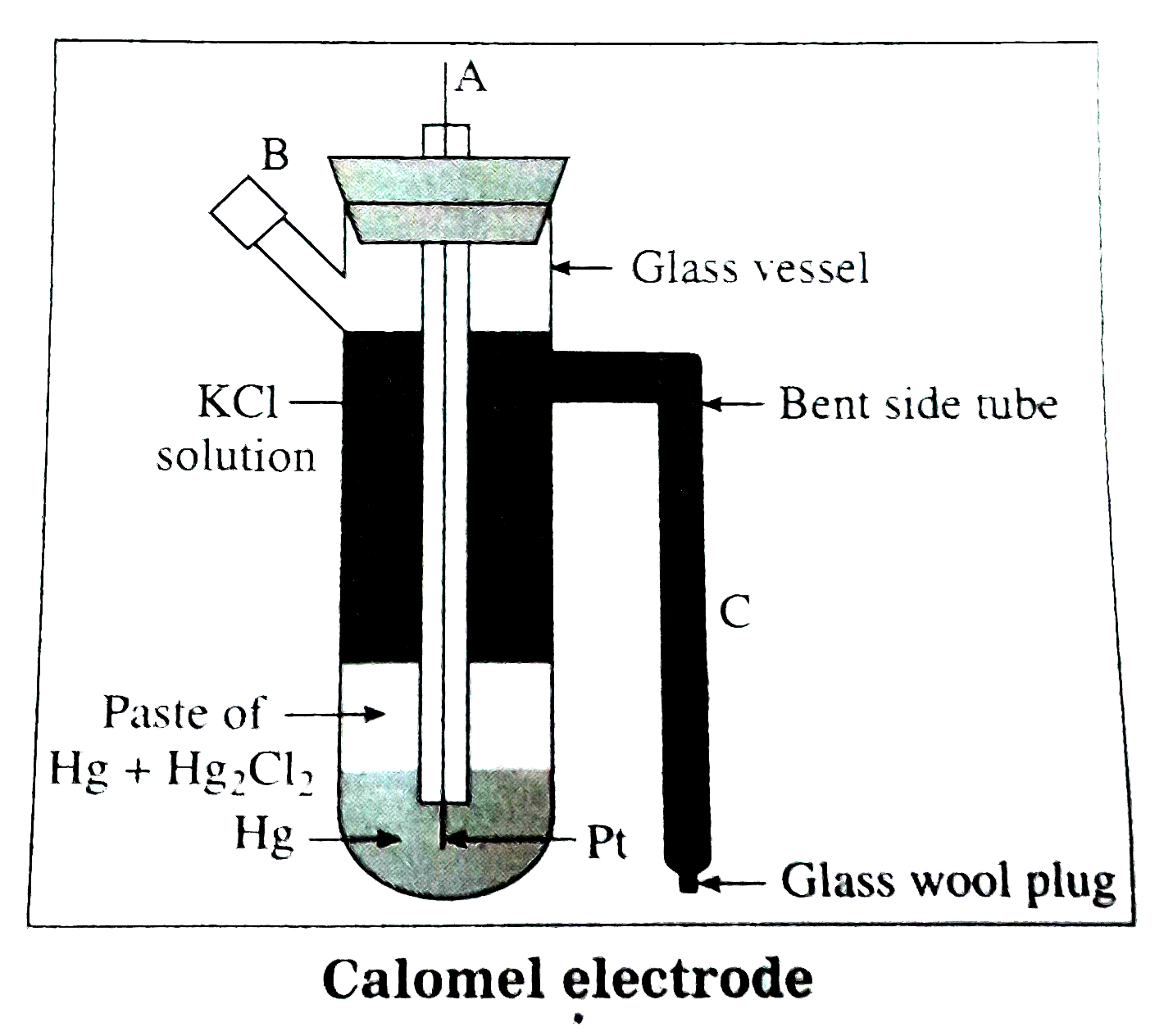Describe the construction and working of the calomel electrode.
Text Solution
The calomel electrode is widely used as a secondary reference electrode.
(1) Construction :
(1) The calomel electrode consists of a glass vessel having side arm B, for adding mercury and other constituents and arm C, for dipping it in any desired solution. A platinum wire A is used for an electrical contact. Over this platinum wire are placed pure mercury.
a paste of Hg and Hg2Cl2 (mercurous chloride, i.e., the calomel and saturated KCl solution so as to fill the vessel and the arm C as shown in figure.
(2) The potential developed on this electrode depends upon the concentration of chloride ions.
(2) Representation of the calomel electrode :
KCl(sat)∣∣Hg2Cl2(s)∣∣Hg(l)
KCl solution of different concentration can also be used.

(3) Working : If the electrode acts as anode then,
Oxidation : The following reaction takes place.
2Mg(l)→Hg2+2+2e−
Hg2+2+2Cl−→Hg2Cl2(s)
Thus overall reaction is , 2Hg(l)+2Cl−(aq)→Hg2Cl2(s)→Hg2Cl2(s)+2e−
If the electrode acts as cathode then,
Reduction : The reduction reaction is represented by
Hg2Cl2(g)+2e−→2Hg(l)+2Cl−(aq)
(4) Applications of calomel electrode :
It is used to determine the potentials of other electrodes by developing a reversible galvanic cell by combining with experimental electrode.
(5) Advantage : (1) The calomal electrode is one of the most widely used reference electrodes.
(2) It has constant reproducible potential.
(3) It is handy, compact and easy to transport.
(4) It has very small temperature coefficient of potential.
|
Similar Questions
Describe the construction and working of a periscope.
View SolutionDescribe the construction and working of Normal Hydrogen Electrode.
View SolutionWhat is a primary cell ? Describe the construction and working of dry cell,
View SolutionDescribe the construction and working of the standard hydrogen electrode (S.H.E.) .
View SolutionDescribe the construction and working of lead accumulator (lead storage cell).
View SolutionDescribe the construction and working of compound microscope.
View SolutionDescribe the construction and working of a magnetic compass.
View SolutionDescribe the construction and working of a Voltaic cell briefly.
View SolutionDescribe the construction and working of a transformer with a neat labelled diagram
View SolutionDescribe briefly the construction and working of nicol prism.
View Solution
